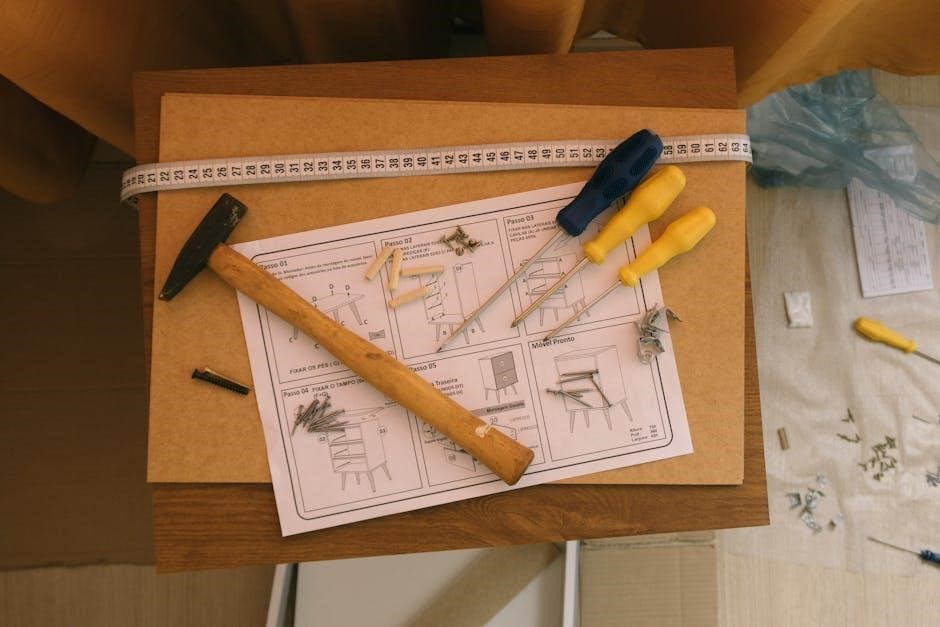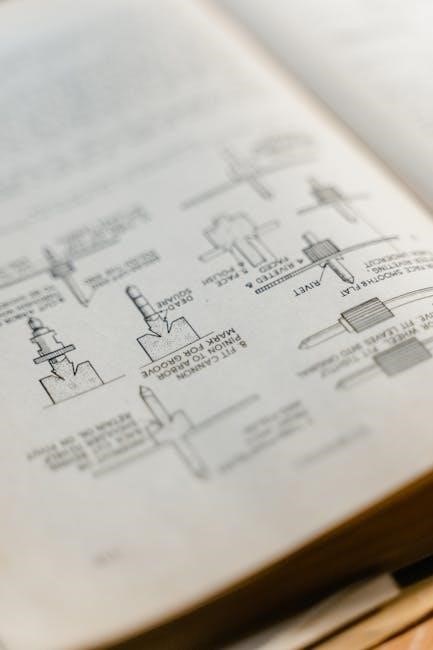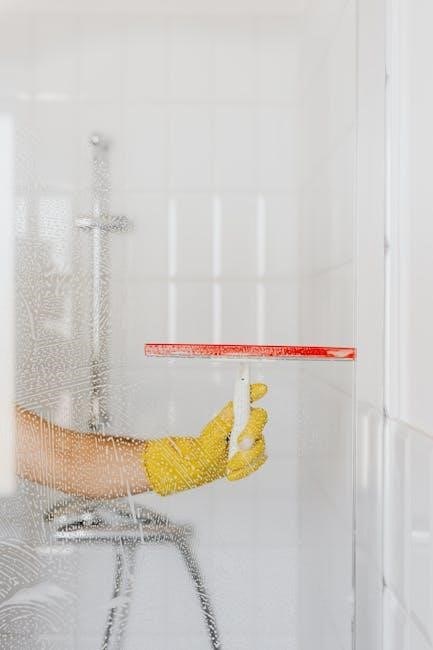Welcome to the ultimate guide for conquering every trophy in the Shadow of the Colossus remake on PS4! This comprehensive walkthrough will help you unlock all 38 trophies, including the coveted Platinum. Master the art of colossus slaying and explore the secrets of the forbidden land!
Shadow of the Colossus on the PS4 is a stunning remake of the original PS2 masterpiece, meticulously crafted by Bluepoint Games. This reimagining boasts vastly improved graphics and modernized controls, making it a must-play for veterans and newcomers alike; Beyond the enhanced visuals and gameplay, the game offers a compelling trophy list to challenge completionists.
This guide will provide a detailed roadmap to unlocking every trophy in the game. From defeating each of the sixteen colossal beasts to mastering various gameplay challenges, we’ll cover everything you need to know to achieve 100% completion. Whether you’re aiming for the prestigious Platinum trophy or simply want to enhance your gaming experience, this guide is your essential companion.
Prepare to embark on a journey through a desolate land, where ancient secrets and formidable foes await. With strategic tips, hidden locations, and expert advice, this guide will empower you to overcome every obstacle and claim your rightful place as a trophy hunter extraordinaire. Dive in and let the hunt begin!
The trophy list features a mix of challenges, including defeating each Colossus under specific conditions, mastering combat techniques, and exploring the game world. Some trophies are straightforward, while others require meticulous planning and execution. Fear not, as this guide will provide step-by-step instructions for even the most demanding trophies. Get ready to test your skills and patience as you strive for ultimate completion!
Total Number of Trophies
Shadow of the Colossus on the PlayStation 4 features a total of 38 trophies, designed to challenge and reward players who fully explore the game’s world and master its mechanics. This collection is comprised of various types of trophies, each representing a different level of achievement within the game.
Specifically, the 38 trophies are broken down as follows: there is 1 Platinum trophy, which is awarded upon unlocking all other trophies in the game; 5 Gold trophies, which represent significant accomplishments; 7 Silver trophies, which denote moderate challenges; and 25 Bronze trophies, which are generally earned through completing core gameplay objectives.

Earning all of these trophies will not only showcase your dedication and skill but also grant you a deeper appreciation for the game’s intricate design and captivating narrative. Each trophy serves as a milestone, marking your progress as you unravel the mysteries of the forbidden land and confront the colossal guardians that dwell within.
From defeating each of the sixteen Colossi to mastering various combat techniques and exploration challenges, the trophy list offers a diverse range of objectives to pursue. Whether you’re a seasoned trophy hunter or a newcomer to the world of PlayStation achievements, the Shadow of the Colossus trophy list provides ample opportunity for both casual enjoyment and hardcore completionism.

Platinum Trophy: The Horned Boy
The pinnacle of achievement in Shadow of the Colossus on PlayStation 4 is undoubtedly earning the Platinum trophy, entitled “The Horned Boy”. This prestigious trophy is bestowed upon players who demonstrate unwavering dedication and mastery of the game by collecting all other trophies available.
To unlock “The Horned Boy,” you must successfully complete every challenge, conquer every colossus, and uncover every secret hidden within the forbidden land. This requires not only skill in combat and exploration but also a deep understanding of the game’s mechanics and a commitment to thoroughness.
Earning this Platinum trophy signifies that you have truly experienced everything Shadow of the Colossus has to offer. It represents hours of gameplay, strategic planning, and skillful execution. It’s a testament to your ability to overcome adversity and emerge victorious against all odds. “The Horned Boy” is more than just a digital badge; it’s a symbol of your triumph over the ancient colossi and your mastery of this iconic video game.
Consider this your ultimate goal, the final step in your journey to platinum completion. Prepare to dedicate time and effort, but remember to enjoy the world crafted by Team Ico. By unlocking “The Horned Boy,” you cement your place among the elite Shadow of the Colossus players.
Gold Trophies Overview
Shadow of the Colossus on PS4 features five coveted Gold trophies, each representing a significant accomplishment that goes beyond simply completing the main storyline. These trophies often require skillful gameplay, strategic planning, or the completion of specific challenges.
Obtaining these Gold trophies will put your abilities to the test, pushing you beyond the typical gameplay experience. Prepare to dedicate time and effort to master specific techniques and overcome unique obstacles. These achievements often require multiple playthroughs or a deep understanding of the game’s mechanics.
The Gold trophies in Shadow of the Colossus represent a higher level of mastery, demanding not just completion but also proficiency. Whether it’s maximizing Wander’s stats, defeating a colossus under specific conditions, or completing a challenging side objective, these trophies serve as a testament to your dedication and skill.
As you embark on your trophy hunting journey, prioritize understanding the requirements for each Gold trophy. Develop strategies, refine your skills, and embrace the challenges that lie ahead. By conquering these formidable tasks, you’ll not only add valuable trophies to your collection but also deepen your appreciation for the intricacies of Shadow of the Colossus.
Strive to earn all Gold trophies to showcase dedication to mastering this game.
Intrepid Mortal Trophy (Gold)
The “Intrepid Mortal” trophy is a Gold trophy in Shadow of the Colossus, awarded to players who maximize Wander’s Health and Stamina bars. This feat requires a dedicated effort to explore the world and collect specific items that permanently increase these vital stats.
To earn this trophy, you’ll need to find and consume all the White-Tailed Lizard tails and collect as many fruits as possible. White-Tailed Lizards increase your stamina, while fruits boost your health. These collectibles are scattered throughout the game’s expansive landscape, often hidden in remote or challenging-to-reach locations.
Systematically explore every corner of the map, paying close attention to areas that may seem inaccessible at first glance. Utilize your map and landmarks to keep track of previously searched areas, preventing unnecessary backtracking. Remember that some lizards and fruits are only available in specific areas or during certain times of day.
As you steadily increase Wander’s Health and Stamina, you’ll notice a significant improvement in his ability to withstand attacks and maintain his grip on the colossi. This increased resilience will prove invaluable as you tackle harder difficulties and attempt to defeat colossi under specific conditions.
By the end of your journey, you’ll obtain the “Intrepid Mortal” trophy as a testament to your thorough exploration and unwavering determination to maximize Wander’s potential.

Grounded Scaler Trophy (Gold)
The “Grounded Scaler” trophy is a Gold trophy in Shadow of the Colossus that requires players to defeat the eighth colossus before it can turn back over. This colossus, known as Kuromori, is a lizard-like creature that crawls on the walls of an arena with platforms surrounding it. Time is of the essence for this challenge.
To achieve this, you must act swiftly and strategically. As soon as the battle begins, quickly descend to one of the lower platforms. Equip your bow and arrow and target the colossus’s glowing weak spots located on its belly. The key is to inflict enough damage to these spots before Kuromori has a chance to flip back over onto its stomach.
Precise aiming and rapid firing are crucial for maximizing your damage output within the limited timeframe. Don’t waste any shots; make each arrow count. If Kuromori manages to turn over, you will fail the challenge and must restart the fight. Remember to prioritize speed and accuracy over everything else.
Once you’ve successfully damaged the weak spots enough, the colossus will fall from the wall, allowing you to deliver the final blow. By defeating Kuromori before it turns back over, you will earn the “Grounded Scaler” trophy.
This trophy demands patience and a good understanding of the colossus’s attack patterns and weak points.
Silver Trophies Overview
Shadow of the Colossus features seven coveted silver trophies, each requiring a significant accomplishment or demonstration of skill within the game. These trophies are a step up in difficulty from the bronze ones, demanding more dedication and mastery of the game’s mechanics.
Many of the silver trophies revolve around completing specific challenges or achieving certain milestones. This could involve defeating a particular colossus under special conditions, mastering a difficult combat technique, or exploring a hidden area within the expansive world. Expect to dedicate a good amount of time and effort to unlock each one.
Unlike the story-related bronze trophies that unlock naturally as you progress, the silver trophies often require you to go above and beyond the main storyline. They encourage you to experiment with different strategies, explore every nook and cranny of the map, and push your skills to the limit.
Some silver trophies may also require multiple playthroughs or a deep understanding of the game’s hidden secrets. This is where consulting a comprehensive trophy guide or seeking advice from experienced players can prove invaluable.
Unlocking all the silver trophies is a testament to your dedication and skill as a Shadow of the Colossus player. It signifies that you have truly mastered the game’s challenges and are well on your way to achieving the coveted Platinum trophy.
Bronze Trophies Overview
Shadow of the Colossus on PS4 features a generous collection of twenty-five bronze trophies, forming the foundation of your journey towards the Platinum. These trophies are generally the easiest to obtain, often awarded for basic progression and completion of core game elements.
A significant portion of the bronze trophies are directly tied to defeating each of the sixteen colossi. As you vanquish these monumental beasts, you’ll automatically unlock the corresponding trophy, marking your progress through the game’s main storyline. These trophies are largely unmissable, provided you’re following the intended path.
Beyond the colossus-specific trophies, some bronze awards are given for performing specific actions or discovering hidden elements within the world. This might involve finding a particular item, completing a side quest, or mastering a basic combat maneuver. These trophies encourage exploration and experimentation, rewarding players who venture off the beaten path.
While the bronze trophies are relatively straightforward, they serve as a valuable introduction to the game’s mechanics and challenges. They provide a sense of accomplishment as you progress, motivating you to delve deeper into the world and uncover its secrets.
Don’t underestimate the importance of these trophies! They not only contribute to your overall trophy score but also provide valuable insights into the game’s intricacies, preparing you for the more demanding silver and gold challenges that lie ahead.
Trophies for Defeating Each Colossus
A core aspect of the Shadow of the Colossus trophy list revolves around conquering each of the sixteen colossal beings that roam the forbidden land. Each colossus you defeat will unlock a corresponding trophy, signifying your progress and skill in overcoming these monumental challenges.
These trophies are primarily bronze, representing the fundamental act of completing the game’s main objective. They serve as milestones, marking your journey from the first lumbering giant to the final, awe-inspiring encounter. Obtaining these trophies is largely unmissable as you progress through the game’s storyline.
However, simply defeating the colossi isn’t the only factor. The game may subtly track your performance, such as the time taken to defeat each colossus or the number of attempts required. While not explicitly stated, some theories suggest that meeting certain performance benchmarks could influence the unlock of other trophies or in-game rewards.
Therefore, it’s advisable to approach each encounter with a degree of strategy and efficiency. Learn the colossus’s weaknesses, master the climbing mechanics, and optimize your attack patterns to minimize the time spent in battle. This will not only enhance your chances of unlocking all the trophies but also improve your overall gaming experience.
As you collect these trophies, remember that each one represents a significant accomplishment, a testament to your perseverance and mastery of the game’s intricate mechanics. They form the backbone of your trophy collection, paving the way for the more challenging silver and gold achievements that await.
Tips for Trophy Hunting
Embarking on a trophy hunt in Shadow of the Colossus requires a strategic approach. Begin by completing the game once, focusing on enjoying the story and familiarizing yourself with the colossi patterns. This initial playthrough will unlock essential story-related trophies.
Next, utilize New Game Plus to retain upgrades like health and stamina, making subsequent playthroughs easier. Prioritize maxing out Wander’s health and stamina early on, as this significantly aids in tackling the more challenging trophies like “Intrepid Mortal.”
Exploit the game’s difficulty settings. Lowering the difficulty can simplify certain challenges, especially those related to time attacks or specific combat maneuvers. Don’t hesitate to adjust the difficulty to suit the trophy requirements.
Master the art of horseback riding. Several trophies require precise control of Agro, such as “Trick Rider.” Practice riding techniques and become comfortable navigating the environment on horseback.
Consult online resources and trophy guides. Many helpful guides offer detailed strategies and tips for specific trophies. Utilize these resources to optimize your approach and avoid unnecessary frustration.

Save frequently and strategically. Creating multiple save files allows you to revert to earlier points in the game if you make a mistake or miss an opportunity for a trophy.
Be patient and persistent. Some trophies may require multiple attempts. Don’t get discouraged; learn from your mistakes and keep trying. With dedication and the right strategies, you’ll conquer every challenge and earn that coveted platinum trophy!






























